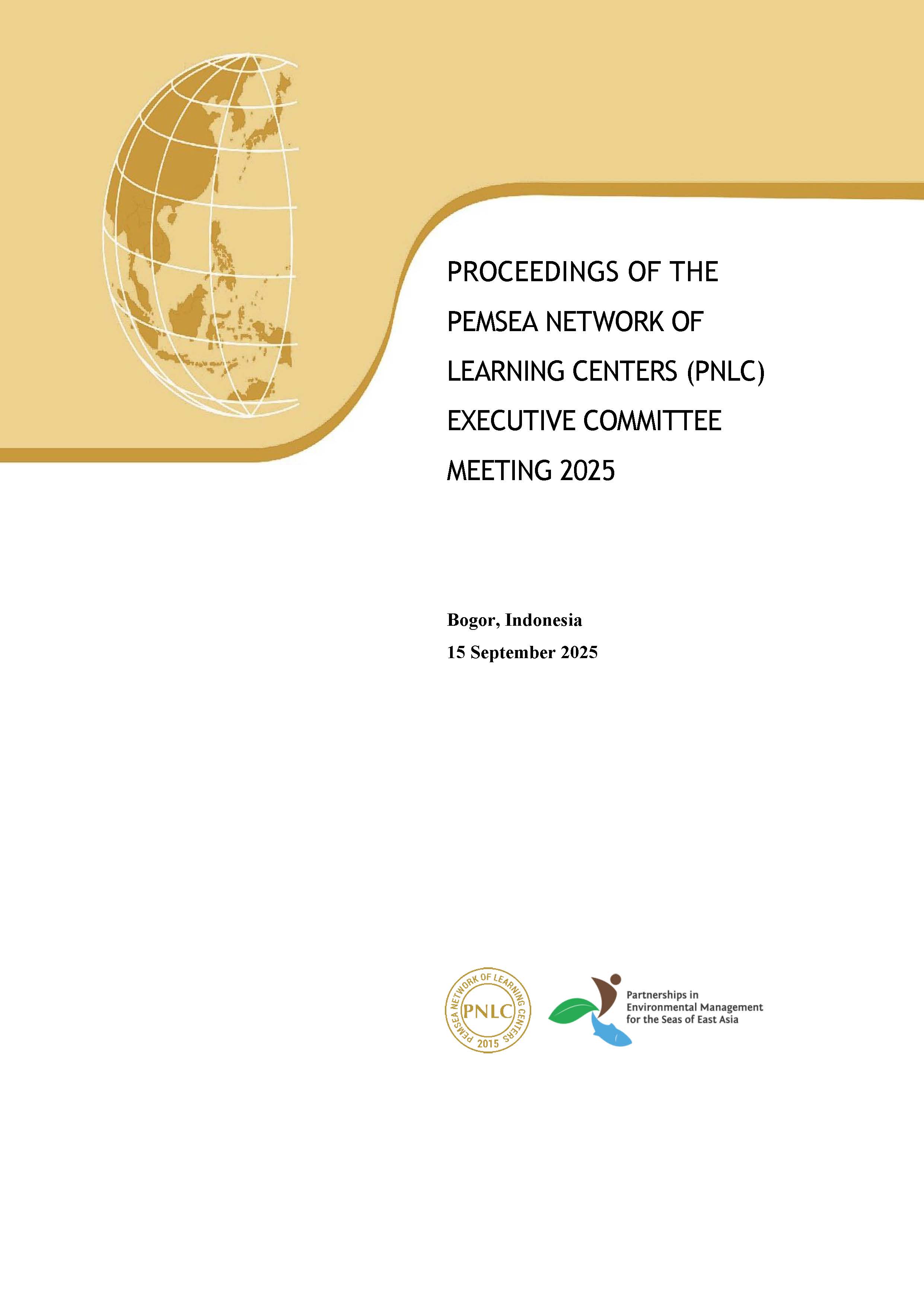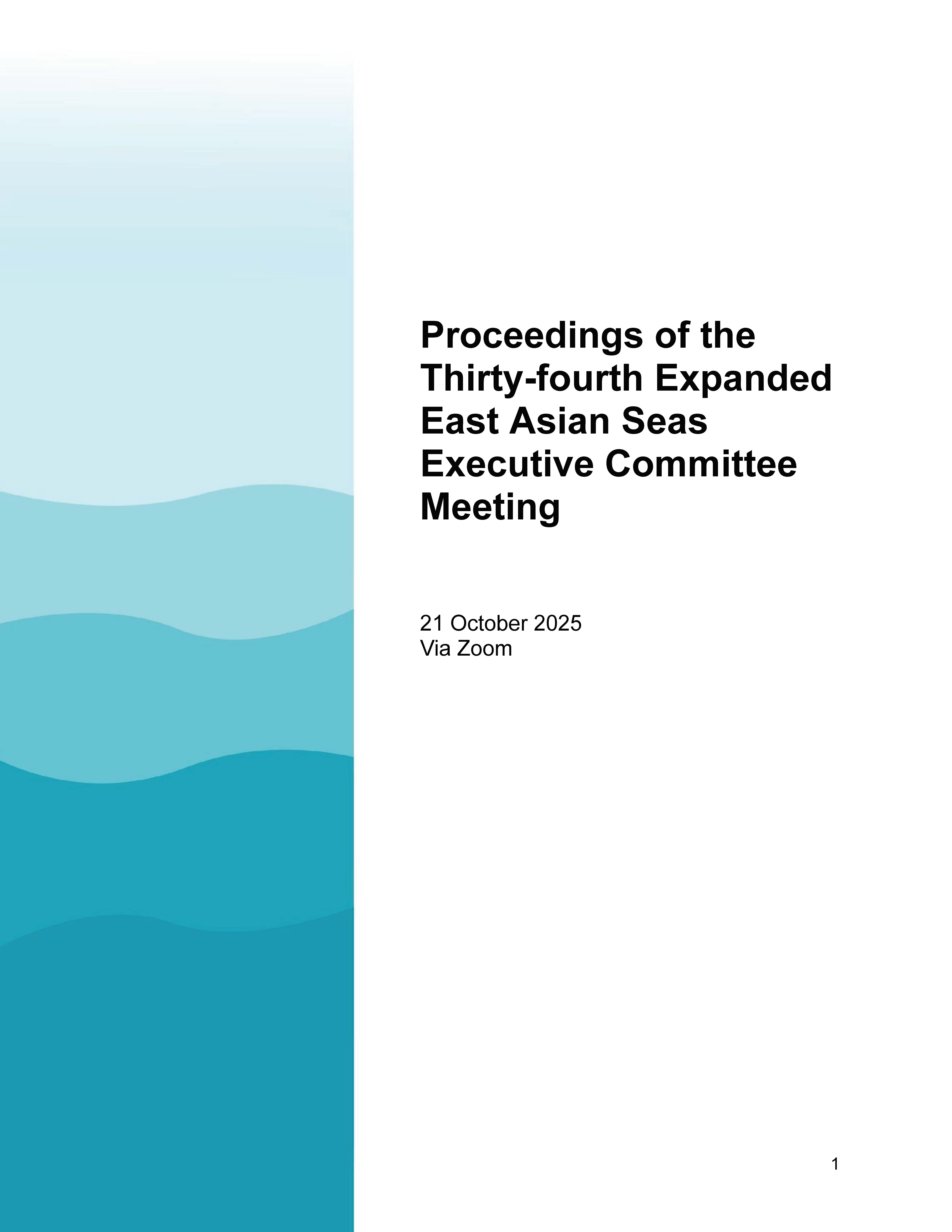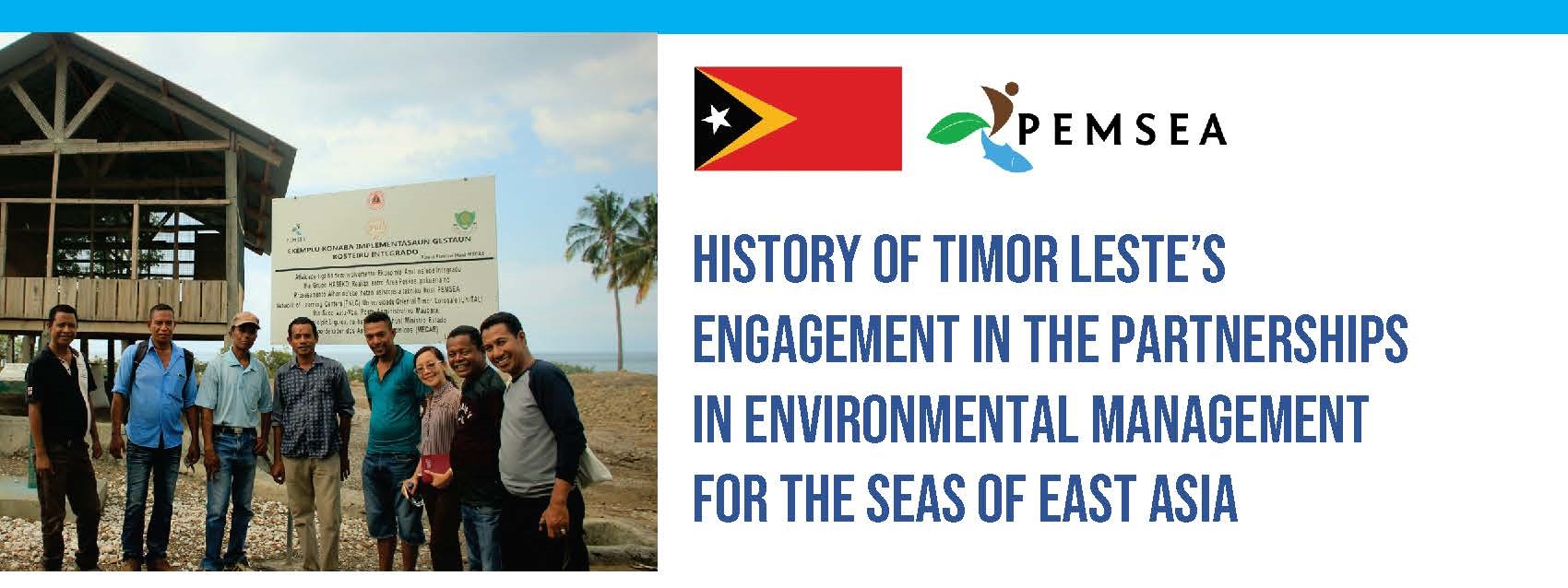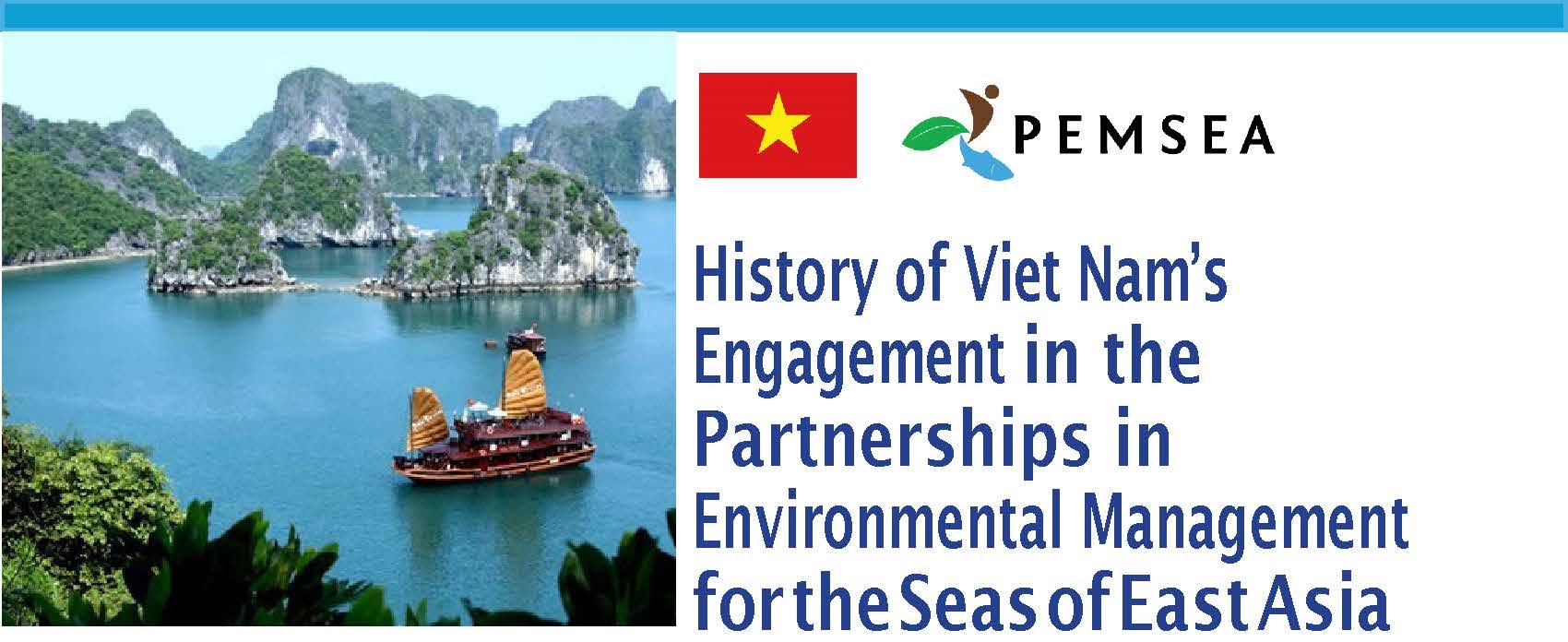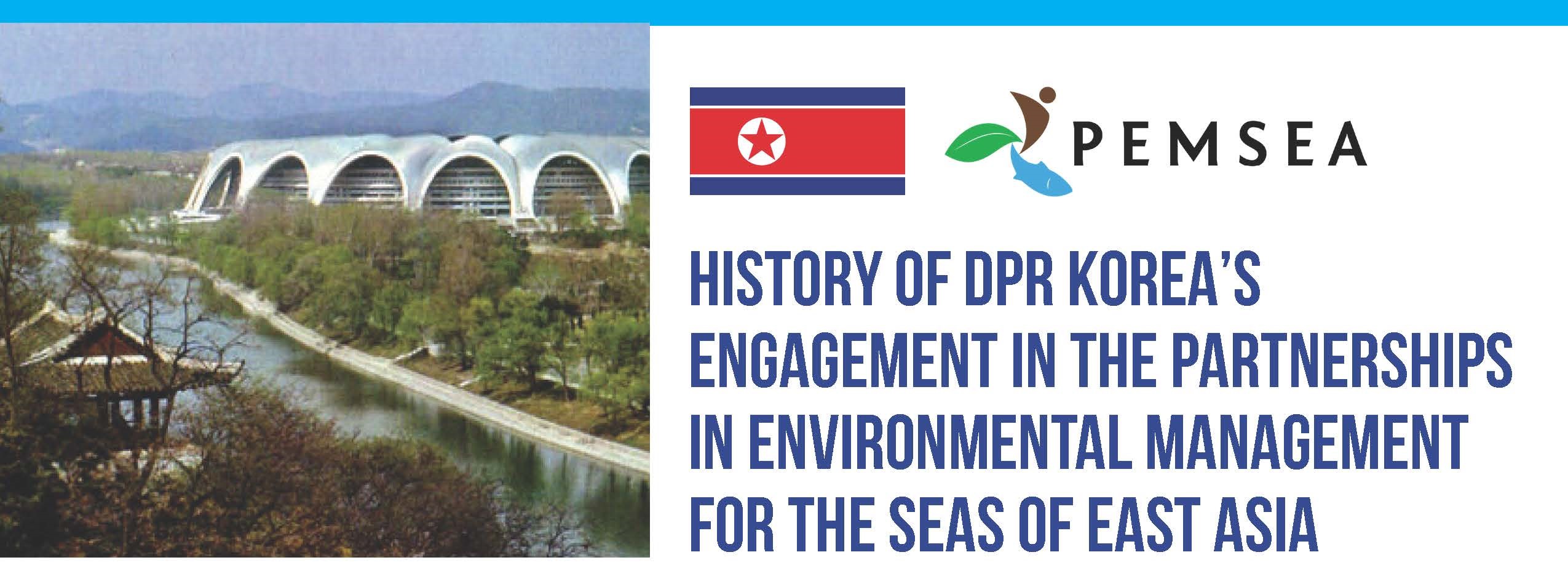
Breadcrumb
Post-2020 Futures Report and Strategy
PUBLICATION DATE:
Thursday, October 31, 2019
PUBLICATION TYPE:
Reports
STATUS:
Only Available Online
DESCRIPTION:
The East Asian Seas cover approximately 7 million km2 of sea area and 235,000 km of coastline. It is recognized as the center of marine biodiversity globally, being home to 31% of the world’s mangroves, 33% of seagrass beds and a third of the world’s coral reefs. Countries in the East Asian region account for 80% of global aquaculture, and around 60% of the world’s capture fisheries. The region’s seas serve as an important conduit for world trade, connecting 9 of the world’s 10 busiest ports. Moreover, the region is a center of economic growth, home to the 2nd and 3rd largest economies of the world (China and Japan, respectively), and the combined economies of ASEAN, which represent the world’s 5th largest economy and the 3rd largest global market with more than 630 million people.
Partnerships in Environmental Management for the Seas of East Asia (PEMSEA) is a regional organization mandated to promote collaboration towards healthy oceans, people and economies in the East Asian Seas (EAS). Eleven country partners and 21 non-country partners have been working together to implement a shared regional strategy called the Sustainable Development Strategy for the Seas of East Asia (SDS-SEA), which outlines ambitious targets and approaches towards ensuring sustainable and prosperous oceans and coasts in the region.
The adoption of the United Nations Sustainable Development Goals (UN-SDGs) in 2015 called on the public and private sectors and civil society to focus their efforts and partnership towards addressing the interrelated challenges of sustainable development, with the view of scaling-up solutions and managing resources more effectively. The same is taking place in East Asia as policies, programs, and projects are being aligned in support of the SDGs across the domains of government, business and finance, civil society, development funding and philanthropy.
As PEMSEA celebrates 25 years of helping strengthen regional governance and cooperation, building local capacity and implementing integrated coastal management (ICM), it now looks to the future. Stepping into a post-2020 world, this report seeks to identify the relevant global, regional and national trends that will catalyze change and influence decision-making for the EAS. In this report, key facts and figures on persistent and emerging trends and priority developments present both familiar and new perspectives on the challenges and opportunities that are likely to matter post-2020. This report is part of the process of stocktaking with a view to developing an action plan (roadmap) that would cover both mid- and long-term programs of work. The report’s aim is to help inform PEMSEA’s effective and collaborative engagement towards more sustainable and prosperous oceans and coasts.
RELATED PUBLICATIONS
PEMSEA NETWORK OF LEARNING CENTERS (PNLC) 2025 Executive Committee Meeting Proceedings
The 2025 PNLC Executive Committee (PNLC EC) Meeting was organized by PNLC Secretariat on 15 September 2025 in Bogor, Indonesia. It was participated by Prof. Yonvitner of the Center for Coastal and Marine Resources Studies of the IPB University (CCMRS-IPB) and President of the PNLC, Dr. Fang Qinhua, Deputy Director of the Coastal and Ocean Management Institute of Xiamen University (COMI-XU) and Vice-President of the PNLC, and Ms. Aimee T. Gonzales, PEMSEA Resource Facility (PRF) Executive Director as members of the PNLC Executive Committee. Ms. Isdahartatie PNLC secretariat Coordinator/ CCMRS-IPB University, Ms. Nancy Bermas from PRF, Francesca Cortez (PRF Secretariat Assistant) and Lusita Meilana, PNLC Secretariat staff. The meeting was chaired by Prof. Yonvitner. Ms. Isdahartati served as the Secretariat of the meeting.
The following supporting documents are annexed to these proceedings:
- Annex 1: Meeting Agenda / Program
- Annex 2: Links to the meeting documents, presentation and photos
- Annex 3: List of participants
Proceedings of the Thirty-fourth Expanded East Asian Seas Executive Committee Meeting
The Expanded East Asian Seas (EAS) Executive Committee convened its 34th Executive Committee Meeting on 21 October 2025 online via Zoom. The meeting was attended by EAS Partnership Council Chair Attorney Jonas Leones; Intergovernmental Session Chair Mr. Le Dai Thang; Intergovernmental Session Co-Chair Dr. Xinwei Yu; Technical Session Chair Dr. Suk-Jae Kwon; and Technical Session Co-Chair Dr. Wakita Kazumi. The PEMSEA Resource Facility (PRF), led by Executive Director (ED) Ms. Aimee T. Gonzales, served as Secretariat to the meeting. PEMSEA Country Partners in attendance included national focal points and representatives from Cambodia, China, Indonesia, Japan, Lao PDR, the Philippines, the Republic of Korea, Singapore, Timor-Leste, and Viet Nam. Non-Country Partners present included representatives from the ASEAN Centre for Biodiversity, Ipieca GISEA, Oil Spill Response Limited, National Marine Hazard Mitigation Service, International Center for Environmental Management of Enclosed Coastal Seas (EMECS), PEMSEA Network of Local Governments, and Korea Institute of Ocean Science & Technology, among others. Online observers included staff from the PEMSEA Resource Facility and UNDP.
History of Timor Leste's engagement in PEMSEA
Since joining PEMSEA in 2006 through the signing of the Haikou Partnership Agreement, Timor-Leste has made remarkable progress in advancing sustainable coastal and ocean governance under the Sustainable Development Strategy for the Seas of East Asia (SDS-SEA). Over the years, the country has implemented Integrated Coastal Management (ICM) programs in key municipalities, developed national ocean and coastal policies, and strengthened inter-agency collaboration for marine protection and livelihood enhancement. Through its participation in regional initiatives such as ATSEA and the Marine Plastics ODA Project, Timor-Leste continues to demonstrate strong commitment to ecosystem-based management, blue economy development, and regional cooperation for healthy and resilient seas.
History of Viet Nam's engagement in PEMSEA
Since 1993, Viet Nam has been an active partner in advancing sustainable coastal and ocean governance in the East Asian Seas through PEMSEA. From pioneering Integrated Coastal Management (ICM) in Da Nang to establishing the Viet Nam Administration of Seas and Islands (VASI), the country has institutionalized ICM in national policy and legislation while fostering regional cooperation through leadership roles in PEMSEA bodies and ministerial forums. Viet Nam’s consistent participation in key initiatives and adoption of major regional declarations underscore its strong commitment to blue economy development, marine ecosystem protection, and the long-term implementation of the Sustainable Development Strategy for the Seas of East Asia (SDS-SEA).
History of DPR Korea's Engagement in PEMSEA
Since joining the regional GEF/UNDP/IMO Marine Pollution Prevention in the East Asian Seas (MPP-EAS) project, the DPR Korea has actively advanced Integrated Coastal Management (ICM) through the establishment of the Nampho demonstration site and the National ICM Training Center at Kim Il Sung University. The country has consistently participated in key regional forums, including the East Asian Seas Congresses and Ministerial Forums, adopting major regional declarations and frameworks such as the SDS-SEA and Manila Declaration. Its engagement reflects a sustained commitment to regional cooperation, marine pollution prevention, and sustainable coastal development under PEMSEA.

